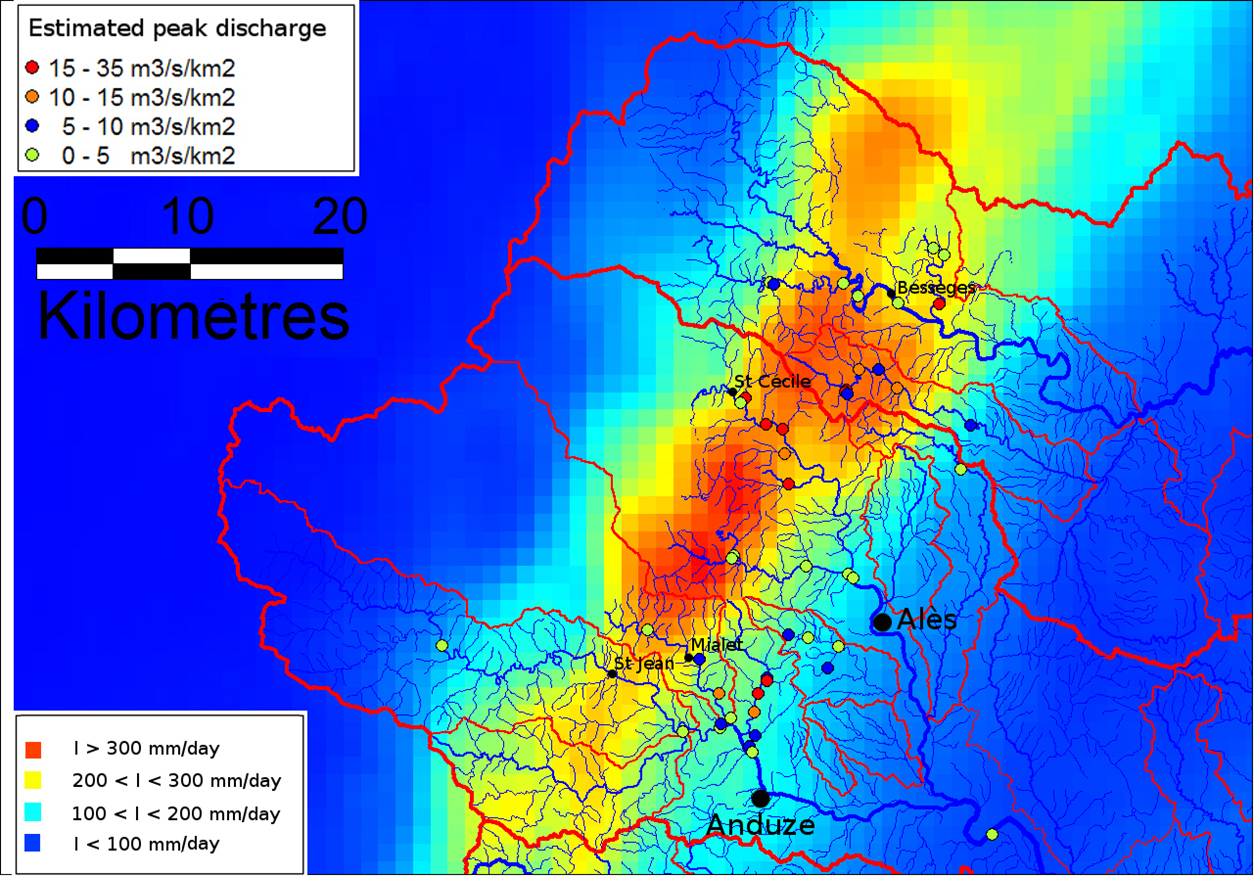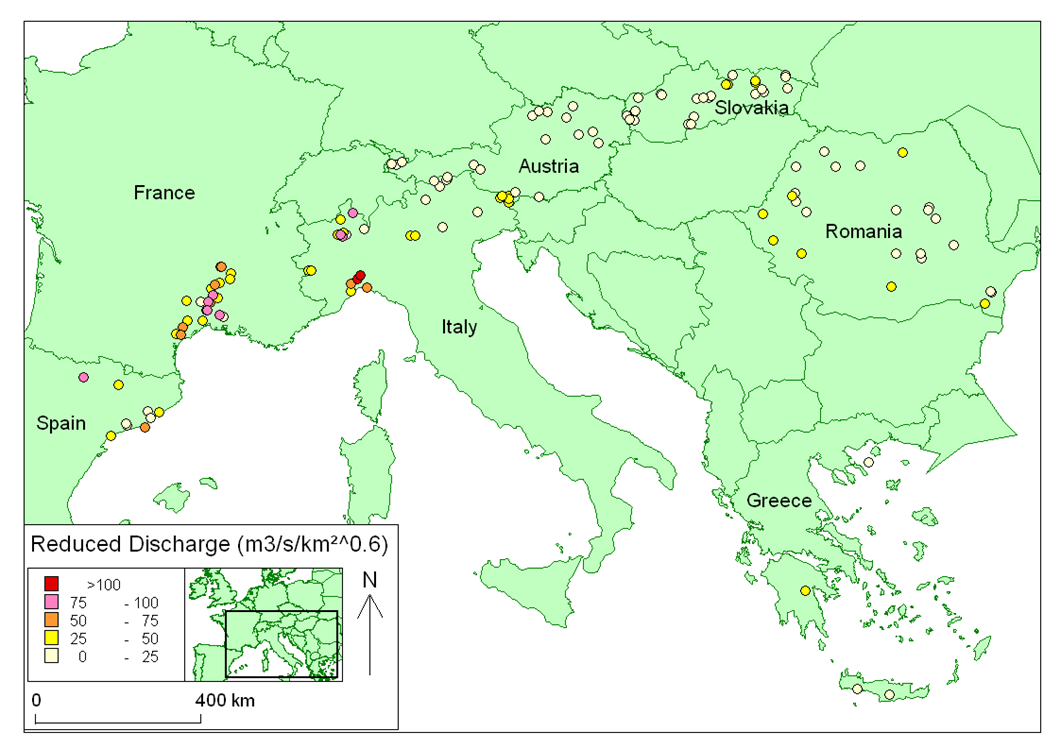Flash Floods in Europe: state-of-the-art and perspectives
Contributed by Eric Gaume

Gard (France), october 2008
What do we really understand about “flash floods”? This question motivated the presentation I gave in Vienna during the last EGU Assembly in the session: Flash floods and associated hazards: monitoring, forecasting, preparedness and coping strategies (see the abstract here).
One of the first questions to address is: ‘What is a flash flood?’
The proceedings of the Paris symposium IAHS in 1974 gives the following definition: « Extreme flood induced by a severe stationary rainfall event ». « Most generally, storms inducing flash floods lead to local rainfall accumulations exceeding 100 mm over a few hours and affect limited areas: some tens to some hundreds of square kilometres »
Flash floods is not a new issue, but a growing concern. The phenomenon has long not really been studied or documented due to the lack of direct measurements. However, some major European research projects on flash floods have been carried out: FLOODsite, HYDRATE, IMPRINTS, HyMeX. There is also an increasing number of publications on the topic, focusing on: forecasting, processes, radar, sediment and erosion, damages and climate change.
Four main areas of research achievements can be identified:
- Comprehensive post-event survey methods
- Improvement of measurement methods
- Hazard assessment and mapping
- New forecasting methods
Achievements include using new methods for the estimation of discharges and damages (analysing films and pictures, collecting interviews and filed survey), as well as improving knowledge on geomorphology and on the spatial variability of observed rainfalls to feed modelling tools for the analysis of observed events.
 Hazard assessment and mapping is essential to improve our knowledge on the magnitude of flash floods, their frequency of occurrence and intensity.
Hazard assessment and mapping is essential to improve our knowledge on the magnitude of flash floods, their frequency of occurrence and intensity.
Progresses have been made in flash flood guidance, rainfall early warning and nowcasting (see, for instance, the IMPRINTS project), highlighting the need for highly distributed forecasting models.

Magnitudes of the largest flash floods over Europe
Where do we need to go now?
Four main research perspectives are:
- Flash floods in arid areas
- Sediment production and transport processes
- Hydraulics of high velocity flows
- Flash flood warning and monitoring tools

What value for the roughness coefficient for extreme events?
Particularly, the development of monitoring and warning tools is a topic relevant to HEPEX activities that should be encouraged, including:
- Nowcasting: improving alert systems for even less than 1-hour,
- Improving knowledge focusing on large spatial coverage and highly distributed information,
- Estimation of possible damages,
- Collection of associated information: for instance, flood extent maps.
Finally, future achievements should favour combining theory and field work!
0 comments